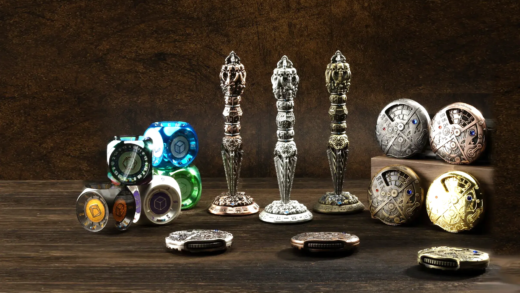This article discusses the unique characteristics of tabby, tortoiseshell, calico, and tuxedo cats. It addresses misconceptions about domestic shorthair cats, explores the possibility of mixed traits among these breeds, explains the genetics behind coat colors, and shares interesting facts about each type. Understanding these aspects enhances appreciation for these beloved feline companions.
Tabby Cat Features: Spotting the Stripes and Swirls
Tabby cats are easily recognizable due to their distinct tabby cat features. These felines showcase a variety of coat patterns, primarily characterized by stripes, swirls, and spots. The most common types of tabby patterns include:
- Mackerel: This pattern features narrow stripes running parallel down the sides, resembling a fish skeleton.
- Classic: Also known as the “blotched” pattern, this type displays swirling patterns that create a unique marbled effect.
- Spotted: Here, the tabby has spots instead of stripes, giving it a more playful appearance.
- Ticked: This pattern is characterized by hairs that are banded with different colors, giving the cat a warm, sandy look.
Identifying these patterns is essential for understanding the breed classification of tabby cats. Their color can range from grey and brown to orange and cream, making them one of the most versatile breeds in appearance.
In addition to their unique markings, tabby cats often exhibit a friendly and social personality. They are typically affectionate and are known to be great companions. Their markings not only make them visually appealing but also serve as a conversation starter among cat lovers.
Identifying Tortoiseshell Cats: The Colorful Patchwork
Tortoiseshell cats are known for their vibrant, patchy fur that combines black, orange, and cream colors. Recognizing these cats involves looking for their distinctive fur patterns. Here are some key traits:
- Color Combination: The mix of colors is the hallmark of tortoiseshell cats, often with no two cats having the same pattern.
- Gender: Most tortoiseshell cats are female due to the genetic factors involved in their coloration.
- Personality: Many tortoiseshell cats are described as having a feisty and independent personality, which is sometimes referred to as “tortitude”.
When identifying a tortoiseshell cat, look for the unique blend of colors and irregular patches rather than a defined pattern. This colorful patchwork makes them not only visually striking but also beloved among cat enthusiasts.
Unique Traits of Calico Cats: More than Just a Pretty Coat
Calico cats are often celebrated for their stunning appearance, which features a tri-color coat of white, black, and orange. However, their unique traits of calico cats extend beyond their looks:
- Genetics: The calico coloration is a result of a specific genetic makeup, making them predominantly female.
- Personality: Calicos are known for being playful and energetic, often displaying a lively disposition.
- Health Factors: Some studies suggest that calico cats may have longer lifespans compared to other cats.
While their gorgeous coats attract attention, calico cats often have distinct personalities that charm their owners. They are not just pretty faces; their playful and engaging nature makes them wonderful companions.
Tuxedo Cat Characteristics: The Dapper Dressed Feline
Tuxedo cats are often described as the “gentlemen” of the feline world, characterized by their striking black and white coat. This unique coloration resembles a formal tuxedo outfit, hence the name. Key characteristics of tuxedo cats include:
- Distinctive Color Pattern: Tuxedo cats typically have a black coat with white markings on their chest, paws, and sometimes face.
- Variety in Appearance: While the classic tuxedo look is well-known, some may have varying degrees of white that can lead to unique appearances.
- Playful Nature: Tuxedo cats are often seen as playful and energetic, enjoying interactive playtime with their owners.
Beyond their looks, tuxedo cats often exhibit affectionate personalities, making them fantastic companions. Their charming demeanor and eye-catching appearance make them favorites among cat lovers.
Exploring the Personalities: Tabby, Tortoiseshell, Calico, and Tuxedo Cats
When it comes to the personality traits of tabby, tortoiseshell, calico, and tuxedo cats, each breed has its unique attributes. Although individual personalities can vary, some general trends exist:
- Tabby Cats: Known for being friendly and social, tabbies often form strong bonds with their human companions.
- Tortoiseshell Cats: Often described as having “tortitude”, these cats can be feisty and independent, showcasing a spirited personality.
- Calico Cats: Playful and energetic, calicos are known for their lively disposition, often engaging in playful antics.
- Tuxedo Cats: With their charming demeanor, tuxedos are typically affectionate, often enjoying snuggles and interactive play.
These personality traits can help potential owners choose the right breed for their lifestyle. However, it’s essential to remember that individual cats may have their own unique quirks and characteristics.
Understanding Color Patterns and Breed Classification
Understanding color patterns and breed classification is crucial in the world of cats. Coat color can significantly impact how we identify different breeds. Key points include:
- Breed Identification: Certain color patterns, like those of tabby, tortoiseshell, calico, and tuxedo cats, are often indicators of specific breeds.
- Genetic Influence: Genetics plays a vital role in determining a cat’s coat color and pattern, affecting breed classification.
- Common Misconceptions: Many people mistakenly assume that all cats with similar colors belong to the same breed, overlooking the unique characteristics of each type.
Recognizing these color patterns not only aids in breed identification but also enhances our appreciation of the diverse beauty found in domestic cats. Understanding these elements can help cat owners make informed decisions regarding their feline companions.
Misconceptions About Domestic Shorthair Cats: Debunking the Myths
Domestic shorthair cats are often misunderstood, leading to several common misconceptions. One prevalent myth is that these cats are not purebred and thus inferior. In reality, domestic shorthairs are simply mixed-breed cats that come in various shapes, colors, and temperaments. Their genetic diversity often makes them healthier than purebred cats.
- Not All Domestic Shorthairs Are Alike: Many believe that all domestic shorthairs look the same. In fact, they can vary widely in appearance, including tabby, tortoiseshell, calico, and tuxedo patterns.
- Temperament Misunderstandings: Some think domestic shorthairs are less affectionate than purebreds. This is not true; many domestic shorthairs are loving and loyal companions.
- Health Myths: There’s a misconception that mixed-breed cats are more prone to health issues. However, the genetic diversity found in domestic shorthairs can lead to lower incidences of certain inherited conditions.
Understanding these misconceptions helps in appreciating domestic shorthair cats for their unique qualities and contributions to the feline world.
Mixed Traits in Tabby, Tortoiseshell, Calico, and Tuxedo Cats: Can They Combine?
Many cat enthusiasts wonder whether tabby, tortoiseshell, calico, and tuxedo cats can exhibit mixed traits. The answer is yes! Due to their genetic backgrounds, these cats can display a combination of characteristics:
- Tabby and Tortoiseshell Mix: A cat might showcase the striking colors of a tortoiseshell with the patterns typical of a tabby, creating a unique and beautiful appearance.
- Calico and Tuxedo Combination: Some calico cats may also have tuxedo-like markings, leading to a striking black, white, and orange pattern.
- Personality Blends: These mixed traits can also influence personality. For instance, a tabby-tortoiseshell mix might inherit the playful nature of a tabby and the spirited personality often associated with tortoiseshells.
Such combinations reflect the wonderful diversity within the feline community, showcasing how genetics can create unique individuals.
The Genetics of Cat Coat Color: The Science Behind the Patterns
The genetics of cat coat color is a fascinating subject that explains why certain patterns appear in tabby, tortoiseshell, calico, and tuxedo cats. The color and pattern of a cat’s coat are determined by several genes:
- Agouti Gene: This gene influences whether a cat’s coat is solid or patterned. It plays a significant role in the tabby pattern.
- White Spotting Gene: Responsible for the white markings seen in tuxedo cats, this gene can vary in expression, leading to different appearances.
- Color Dilution Gene: This gene can lighten a cat’s coat color, creating variations like cream instead of orange.
Understanding these genetic factors helps explain why certain breeds exhibit specific colors and patterns, enriching our appreciation for these beautiful creatures.
Interesting Facts About Tabby, Tortoiseshell, Calico, and Tuxedo Cats: Fun Tidbits to Share
Finally, here are some interesting facts about tabby, tortoiseshell, calico, and tuxedo cats that will amaze you:
- Tabby cats: Historically, they have been favored in various cultures for their hunting skills, often depicted in art and folklore.
- Tortoiseshell cats: They are often thought to bring good luck, especially in Japanese culture where they are considered lucky charms.
- Calico cats: Due to their unique coat patterns, they are often referred to as “money cats” in some cultures, believed to bring prosperity.
- Tuxedo cats: Famous for their dapper appearance, they have been featured in various movies and cartoons, often as charming companions.
These facts highlight the rich history and cultural significance of these cat types, making them even more endearing to their owners.





Comments are closed.